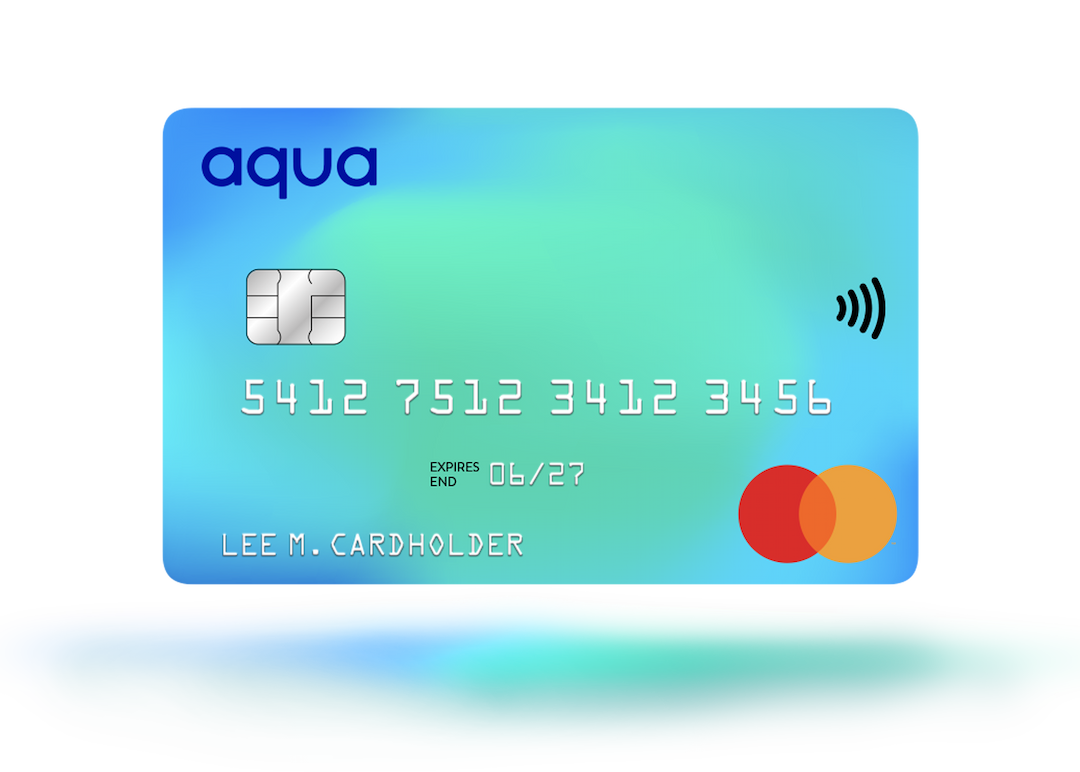In this article
How to apply for a credit card
If you’re looking to apply for a credit card then read our comprehensive guide. Learn about eligibility, credit card types, credit limits, APR, and more.

Understanding how to apply for a credit card can often feel confusing. Although the application process may vary between different providers, the typical steps taken are surprisingly straightforward.
In most cases, the process starts with an eligibility check that will let you know if you’re likely to be accepted for the credit card. This is known as a ‘soft check’ and doesn’t impact your credit score. At this stage, if eligible for the card, you’ll find out your APR and likely credit limit. If you decide to apply, the lender will run a full credit check to make sure you meet all their criteria. If approved, you’ll have the chance to accept or decline the offer before the lender pops your new card in the post.
How do credit cards work?
Credit cards let you borrow up to an agreed amount, known as a credit limit. With Aqua card, your credit limit could adjust as we get to know you and may even grow over time if you manage your account well.
By having access to credit for everyday purchases such as groceries, online purchases or a meal at your favourite restaurant, a credit card can be a great financial tool for secure payments and may even help you build your credit score, when you manage your account responsibly.
If you pay back what you borrow in full each month, and you only use your account for purchases, you won’t pay interest. But if you need financial flexibility, you have the option to carry forward your balance from month to month with added interest, just be sure to make at least the minimum payment as shown in your monthly credit card statement. You may also be charged interest on certain transactions right away, for example cash withdrawals and balance transfers. These types of transactions may also carry a fee. Learn more about credit card charges.
Different types of credit card
Different types of credit cards are designed to serve different purposes. Where some people will choose a credit card for building credit, others might prefer a balance transfer card, 0% purchase card or a rewards card. To help you make the right decision, here’s a summary of common credit card types.
Credit cards to build credit
A credit card to build credit is often referred to as a ‘credit builder credit card’ or ‘rebuilder credit card’. As the name suggests, this type of credit card is designed to help you improve your credit score or, if you’re new to credit, to start building your score. These cards are typically designed for people with a low credit score and offer a better chance of acceptance along with manageable starting credit limits.
Balance transfer credit
Balance transfer credit cards let you transfer debt from one card to another. If there is a balance transfer offer on the card, it could be ideal for helping you reduce the interest you pay on your balance. This type of credit card often offers an initial interest rate of 0% on balance transfers during a set period from when your account was opened. Always check the terms of the card to which you are making a balance transfer to make sure the option is right for you. For example, there may be a fee for making balance transfers or the rate you will be charged at the end of the promotional period may be higher than the rate you are paying today.
Rewards credit card
Rewards credit cards give you the chance to earn cashback, loyalty or other rewards by giving you a percentage back on your spending. Provided it’s used responsibly, and you stay within your credit limit, a rewards credit card is a popular way to get benefits from your purchases.
0% purchase card
A 0% purchase card gives you the flexibility to make purchases without being charged interest during a specified time period. Once the time period ends, the standard rates will apply to the remaining balance of your credit card.
What do I need to apply for a credit card?
To apply for a credit card, you should check your eligibility for the card first. By using a soft-check eligibility tool, you’ll find out the likelihood of being accepted for a credit card without affecting your credit score. Personal details you’ll be asked to share could include:
- Name
- Date of birth
- Marital status
- Address
- Email and telephone number
- Employment status
- Annual income and spending
It’s important to remember a soft check will only let you know your likelihood of acceptance. You’ll still need to submit a full application with your chosen card provider to know whether you’ve been accepted. At that point, a full credit check will be carried out, which is recorded against your credit file.
Choosing the right card
Choosing the right card will depend on how you’re going to use your card and what additional features might suit your lifestyle. With every card there are certain things to consider, including:
APR
The APR on a credit card is the cost of borrowing money over a year. The Representative APR (Annual Percentage Rate of Charge) is the rate used by lenders to help you compare the cost of borrowing across different credit cards. Stated as an annual figure, it considers the credit card interest rate and any account management fees to help you understand the cost of borrowing. The rate you are offered if you are accepted for the card is your personal APR and could be higher.
Credit limits
A credit limit is the maximum amount you can spend on a credit card. Your credit limit can change depending on how you manage your card, and it’s important to stay within your limit to build your credit score. Provided you’ll be able to make repayments, you can also ask your credit card provider whether they can increase your limit.
Fees and charges
When you’re comparing credit cards, make sure you consider the fees as well as the interest. With some credit cards, you might be charged an annual fee which can vary from a few pounds per month to more than £100 a year. Additional fees might also apply, for example if you withdraw cash, make a balance transfer or use your credit card abroad. There are also usually fees for exceeding your credit limit or missing payments.
Introductory offers
Some credit cards have introductory offers and incentives such as an interest-free period on certain types of transitions. Before you apply for a credit card based on an offer, it’s wise to check the interest rates which will apply after the offer has ended and well as any fees, and other terms and conditions which apply to the offer.
How to know if you’re eligible for a credit card
To find out if you’re eligible for a credit card, check your eligibility using a soft check, such as Aqua’s SafeCheck. By completing a soft check, you’ll understand your likelihood of being accepted for that credit card without impacting your credit score.
If the result says it’s unlikely you’ll be accepted, it’s best not to apply for credit until you’ve improved your credit score. While it might be tempting to apply for a credit product with low eligibility, you run the risk of being declined which could result in a negative impact to your credit score.
Aqua card is designed to help you build your credit score when you manage your account well. We try our best to say yes and offer manageable starting credit limits that could grow over time. Learn more about Aqua card.
What to do if your application is accepted
Once your application is accepted, you’ll receive your new credit card in the post which will need to be activated before it can be used. To keep you on track and to grow your credit score, it’s best to stay within your credit limit, and budget well for your incomings and outgoings, so you never miss a repayment.
What to do if your application is declined
If your application is declined, it’s best to wait at least three months before applying again. In the meantime, you can see whether your credit score is improving by checking your report with one of the credit reference agencies, such as TransUnion.
FAQs
Should I get a credit card?
Managing your finances can be a tricky business. But with a credit card, you can spread your costs, build your credit history and buy with confidence with purchase protection. With an Aqua Classic credit card, you’ll also benefit from a personalised credit limit which adjusts as we get to know you – and could even grow over time if you manage your account well. Aqua also comes with Aqua Coach, our free credit-building tool in the Aqua app. With Aqua Coach, you can view your credit score for free and get expert support with personalised tips to help improve your score.
Can I apply for a credit card with bad credit?
Applying for a credit card with bad credit doesn’t mean you won’t be accepted. Aqua is here to help - our card is designed for those with bad credit or a poor credit history. We will assess your application and will do our best to say yes, responsibly. Backed by our expert support, secure app and personalised credit limits, we give you the power to improve your credit score when you manage your account well.
How long will it take to receive my credit card?
In most cases, your credit card application can take seven to ten days to process and could take one or two days longer if your application is flagged for a manual review. If you are approved for an Aqua card, you’ll usually find out as soon as you submit your online application, with your new card arriving in the post within ten days. For security, you’ll receive your PIN separately.
What is the difference between a credit and a debit card?
The difference between a credit and debit card is that a credit card allows you to borrow money from a lender, whereas a debit card allows you to spend money from your own funds in your bank account. When using your credit card, you borrow money from a lender which is usually repaid with interest and sometimes additional fees. With a debit card, however, you can make payments directly from funds available in your current account.
Failure to make payments on time or to stay within your credit limit means that you will pay additional charges and may make obtaining credit in the future more expensive and difficult.
Contributors

Victoria Smith
Victoria is an editor at Aqua.

Vanessa Stewart
Vanessa is an editor at Aqua.
You might also like
Slide 1 of 3
Advantages of using a credit card
From spreading costs to building credit history, learn the benefits of credit cards when used responsibly.
Vanessa Stewart

What is a credit card and how do they work? -...
Discover the basics of credit cards, how to use them, and the benefits of using credit cards in our comprehensive g...
Hayley Bevan

Credit card vs debit card - what's the differ...
Understand the key differences of credit vs debit and learn which is best suited for your needs.
Vanessa Stewart
The smart way to build better credit
Aqua is the credit card that gives you the power to improve your credit score
